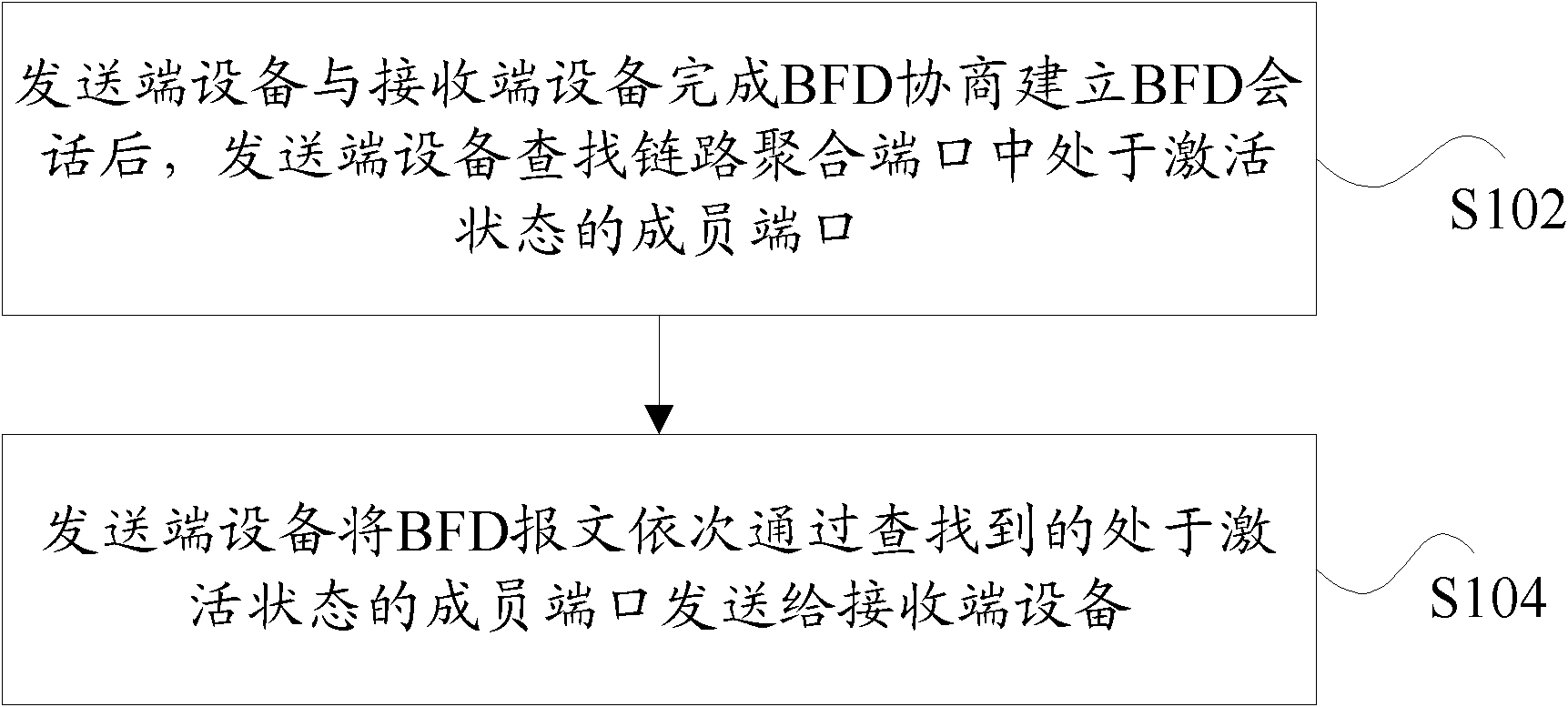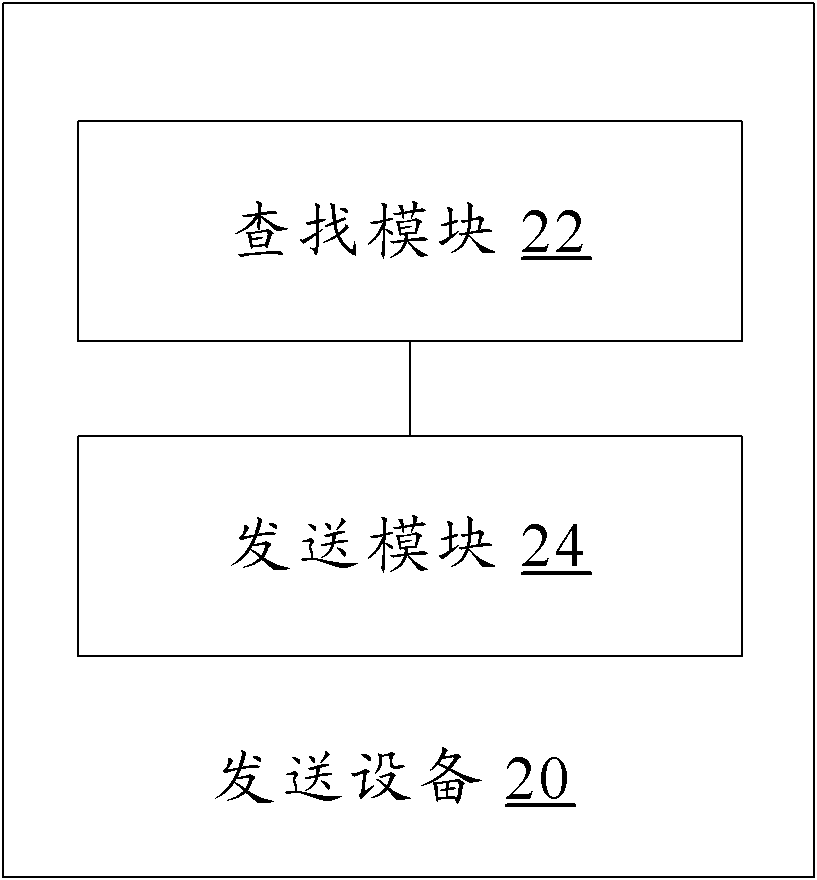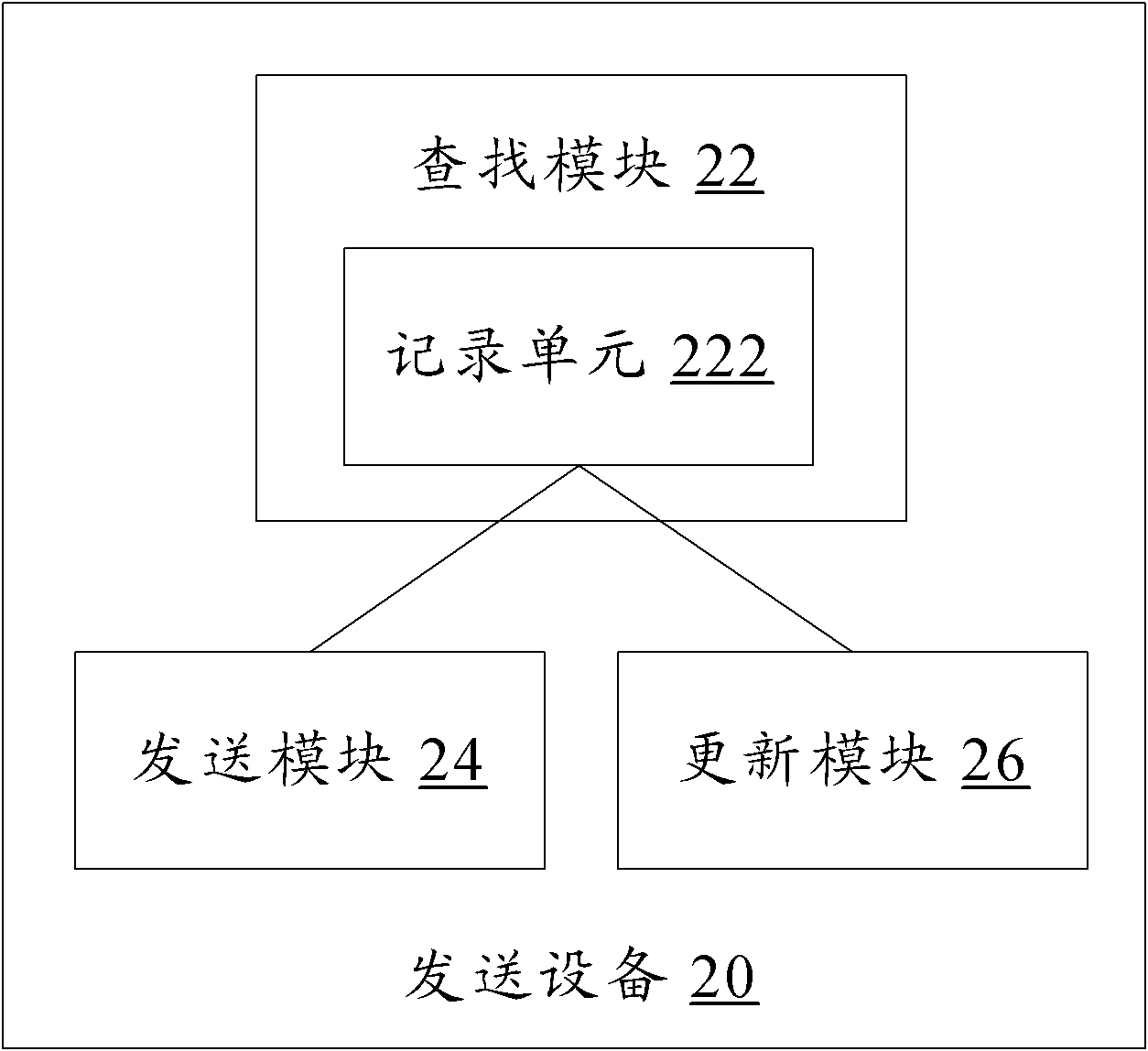Method and equipment for sending bidirectional forwarding detection message
A technology for two-way forwarding detection and sending equipment, applied in the field of communication, can solve the problem of inability to maintain the stability of BFD sessions, and achieve the effect of improving processing capacity and performance
- Summary
- Abstract
- Description
- Claims
- Application Information
AI Technical Summary
Problems solved by technology
Method used
Image
Examples
Embodiment 1
[0045] In order to overcome the problem that the BFD session cannot maintain stability in the scenario of multi-link direct connection existing in the prior art, this embodiment provides a method in which the state of the BFD session does not fluctuate and the upper layer protocol does not Miscutting will occur, and the business will not be interrupted. The method can be applied to the sending end device (the sending end device and the receiving end device communicate through at least two direct links), including the following steps:
[0046] Step 1: Two devices directly connected through multi-links complete BFD negotiation and establish a BFD session. It should be noted that in the specific implementation process, it is necessary to ensure that the current number of links is not greater than the number of repeated detections of the BFD session. The total number of current member links can be determined by the current networking configuration, and the number of repeated detec...
Embodiment 2
[0051] This embodiment provides a method for sending BFD packets. The specific link to which the BFD packet is sent no longer depends on the policy set by the link aggregation protocol. A link is sent out. In this way, the repeated detection times n of the BFD session (BFD session timeout time: n * detection period) is not less than the total number of member links m, even if some member links fail, the stability of the BFD session can be guaranteed.
[0052] For example, considering that the BFD detection session down is based on the repeated detection times n * The detection period is based on not receiving the BFD message sent by the peer. Then, in extreme circumstances, if m-1 member links of the aggregated link fail, the peer will be in (m-1) * The BFD packet from the peer end cannot be received within the detection period. And n is not less than m, that is, n>m-1. In this way, it can be ensured that even if m-1 member links are down, link failures will not be falsely...
Embodiment 3
[0060] During the process of sending BFD packets, the multi-link aggregation port may add a new member port, or the active member port may switch to the inactive state, so the BFD packet sending link table must be updated synchronously.
[0061] Figure 7 It is a flow chart of updating the link table for sending BFD packets according to an embodiment of the present invention, such as Figure 7 shown, including the following steps:
[0062] In step S702, the link aggregation protocol notifies that a state of a member link of the aggregated link changes.
[0063] Step S704, judging the current state of the member link. If the member link advertised by the link aggregation protocol is inactive, go to step S706; otherwise, go to step S712.
[0064] Step S706, find the corresponding BFD packet sending link table entry according to the link aggregation port and member port notified by the link aggregation protocol.
[0065] Step S708, if the found BFD packet sending link table e...
PUM
 Login to View More
Login to View More Abstract
Description
Claims
Application Information
 Login to View More
Login to View More - R&D
- Intellectual Property
- Life Sciences
- Materials
- Tech Scout
- Unparalleled Data Quality
- Higher Quality Content
- 60% Fewer Hallucinations
Browse by: Latest US Patents, China's latest patents, Technical Efficacy Thesaurus, Application Domain, Technology Topic, Popular Technical Reports.
© 2025 PatSnap. All rights reserved.Legal|Privacy policy|Modern Slavery Act Transparency Statement|Sitemap|About US| Contact US: help@patsnap.com



